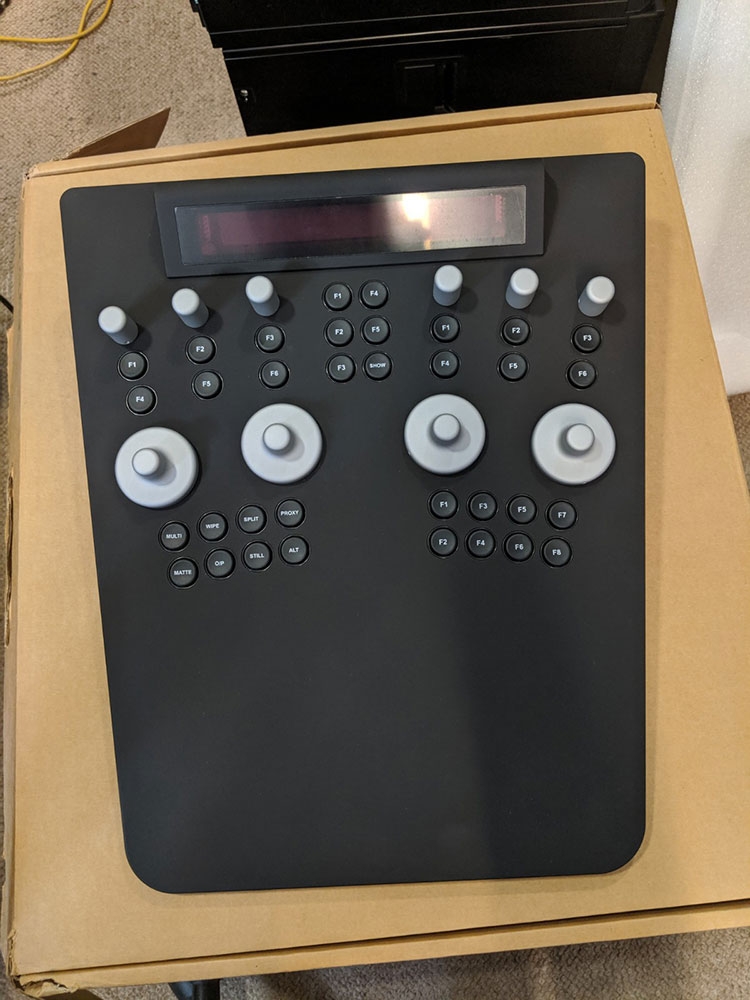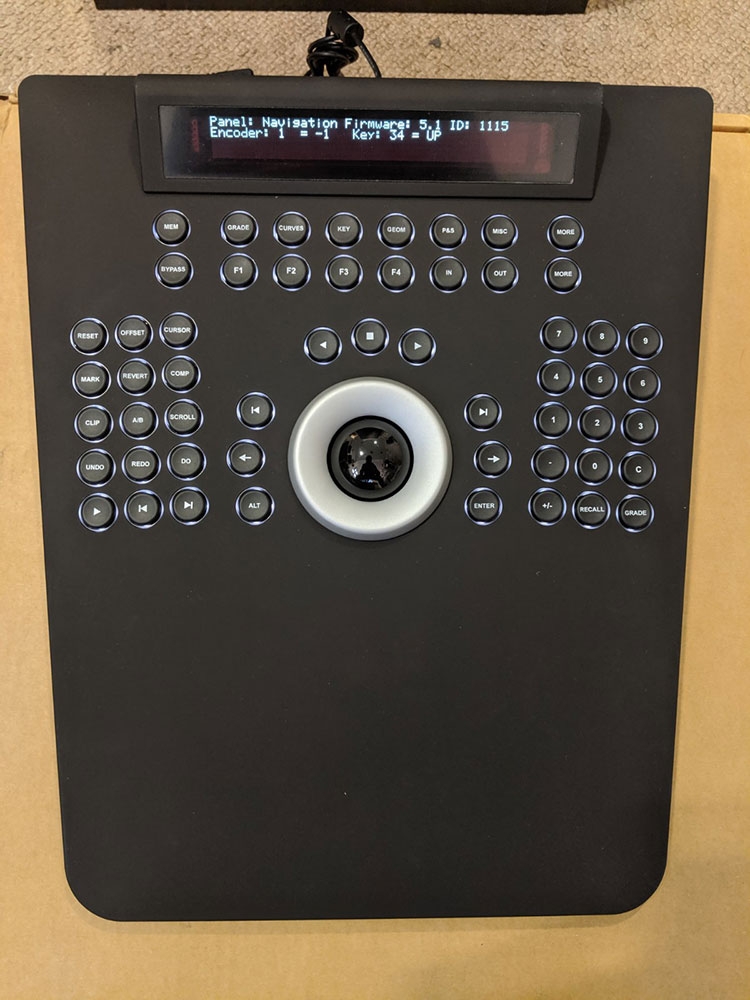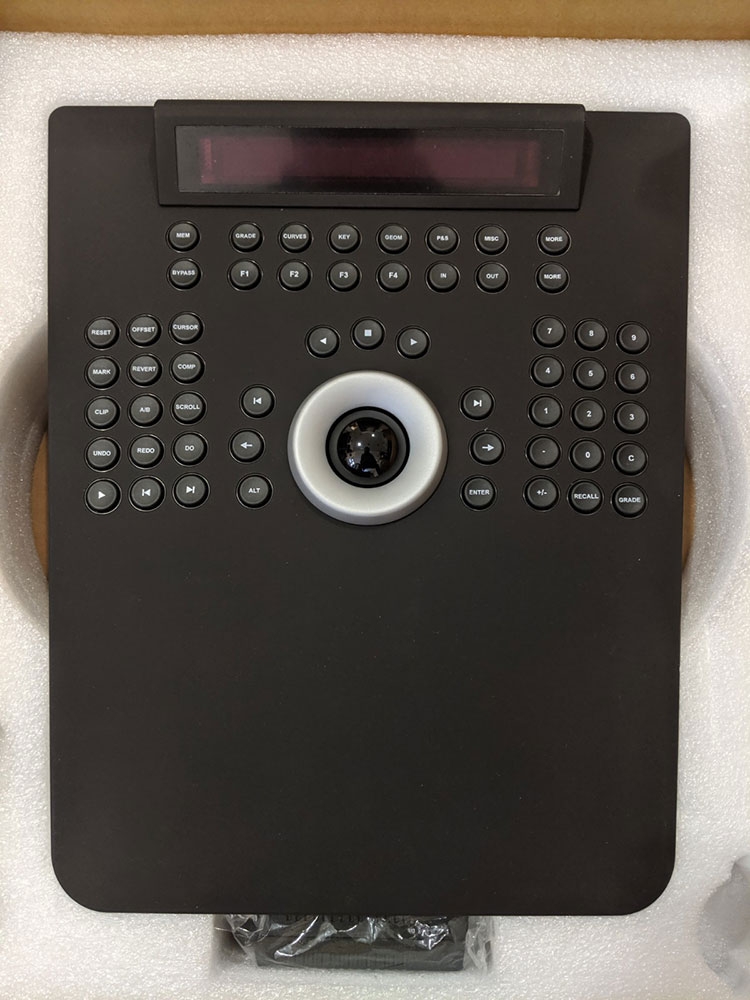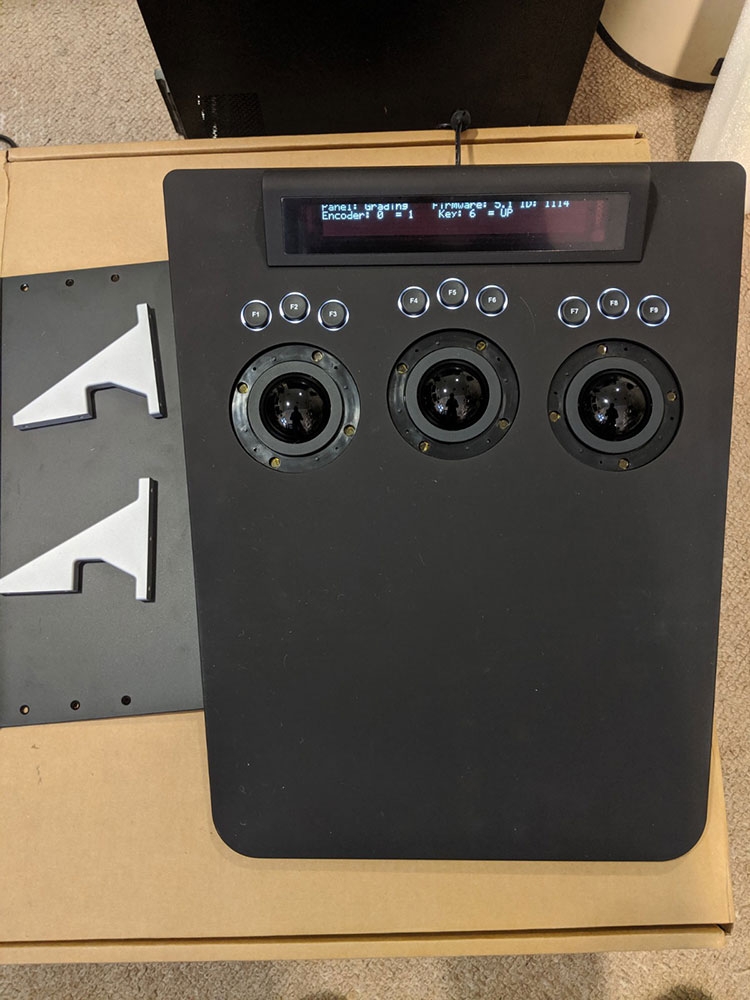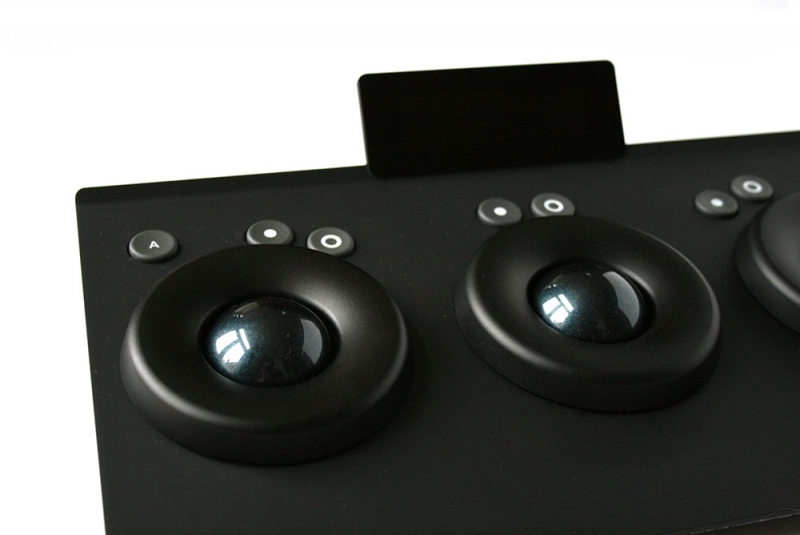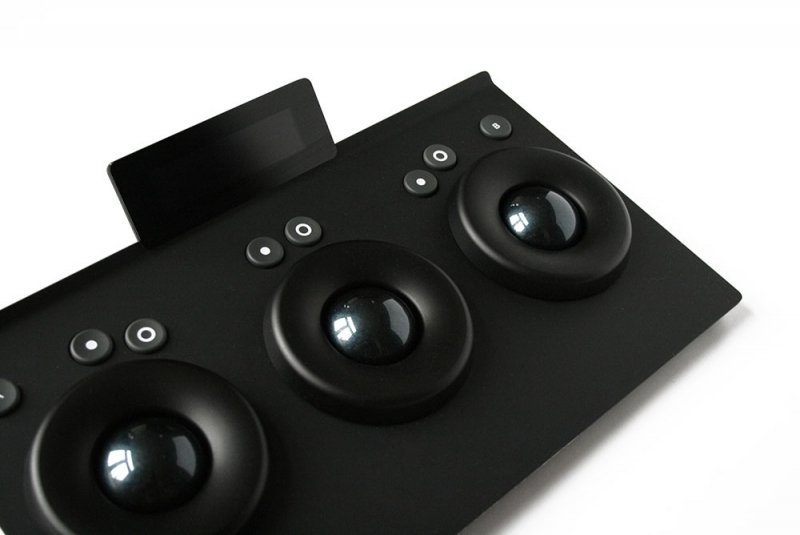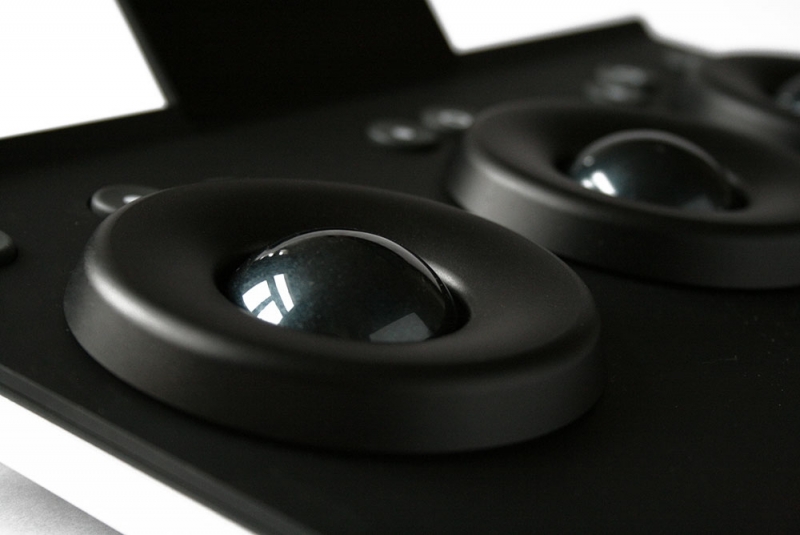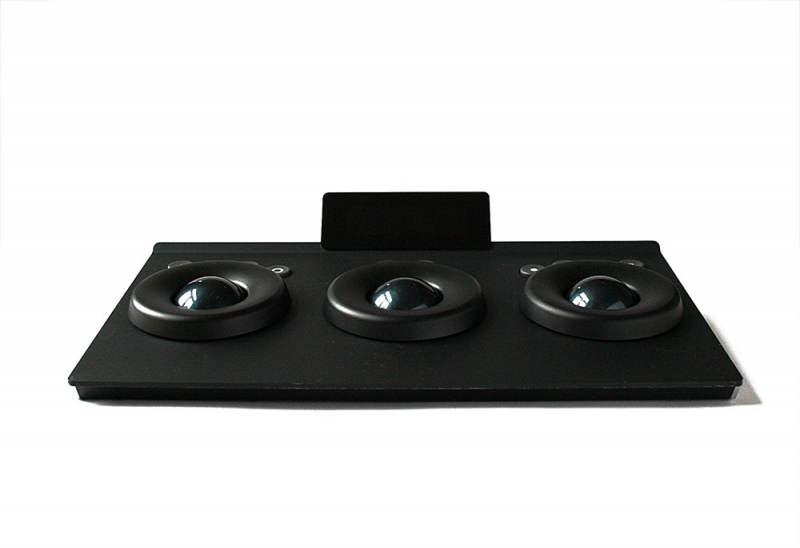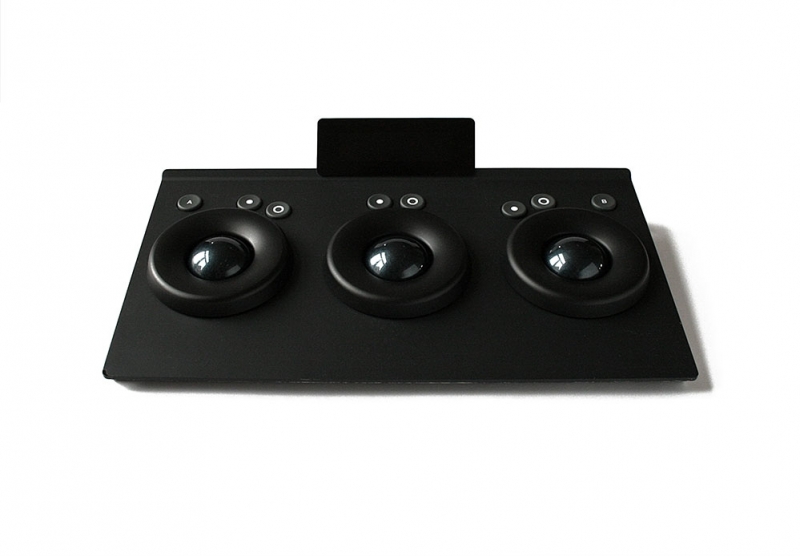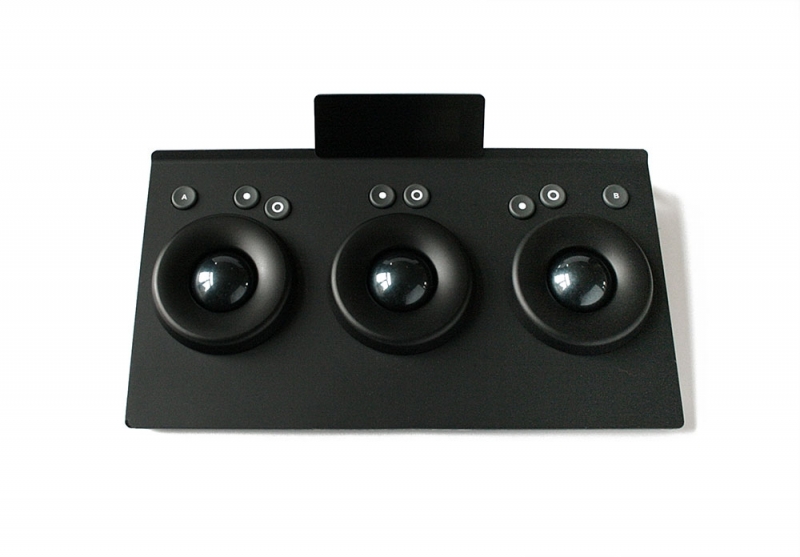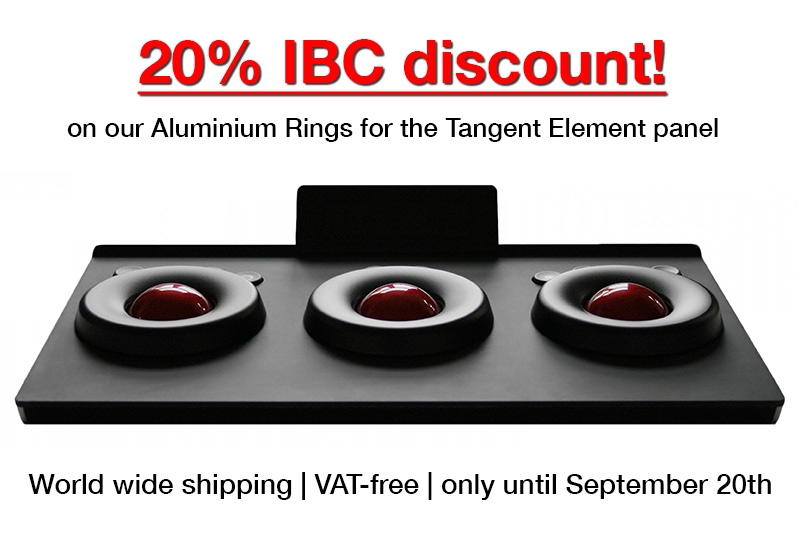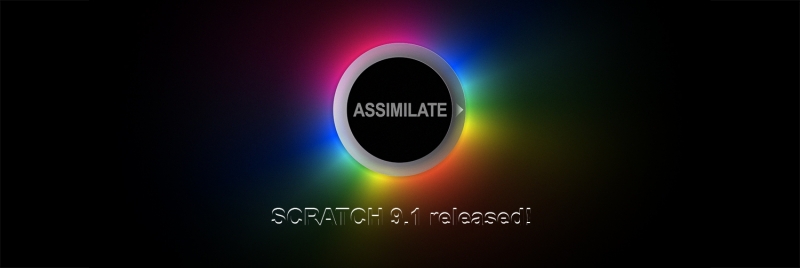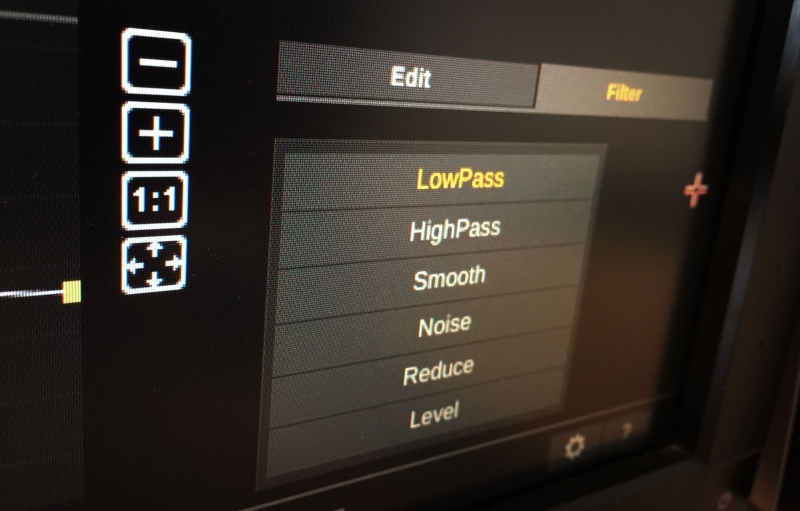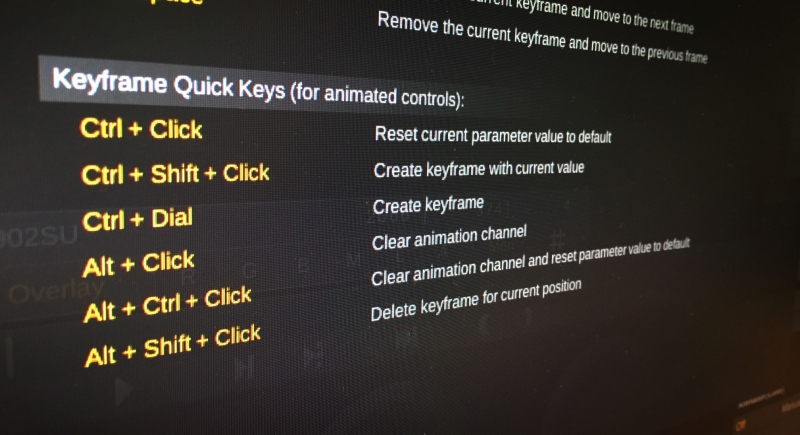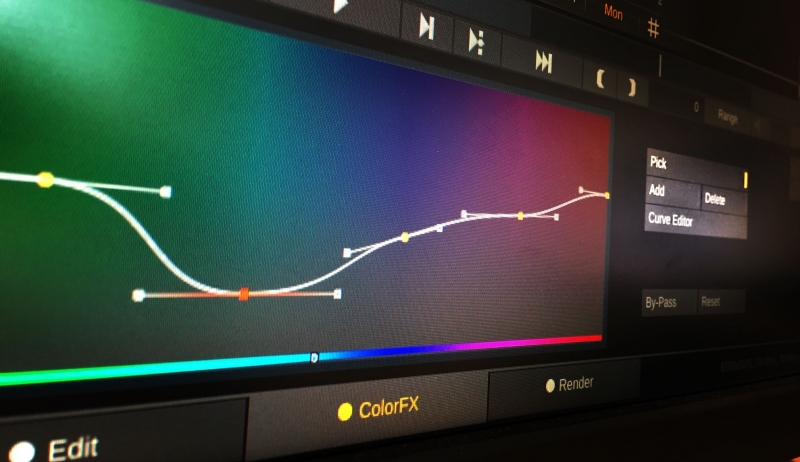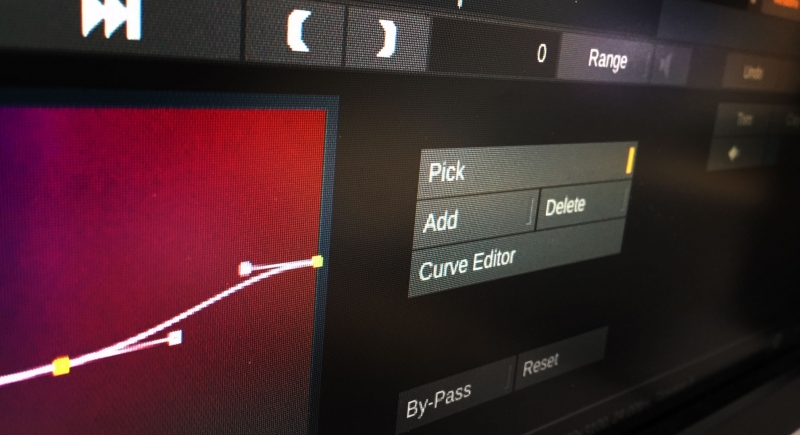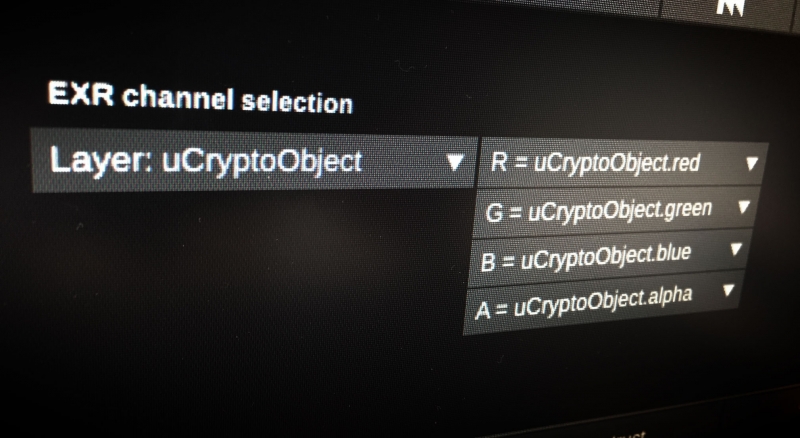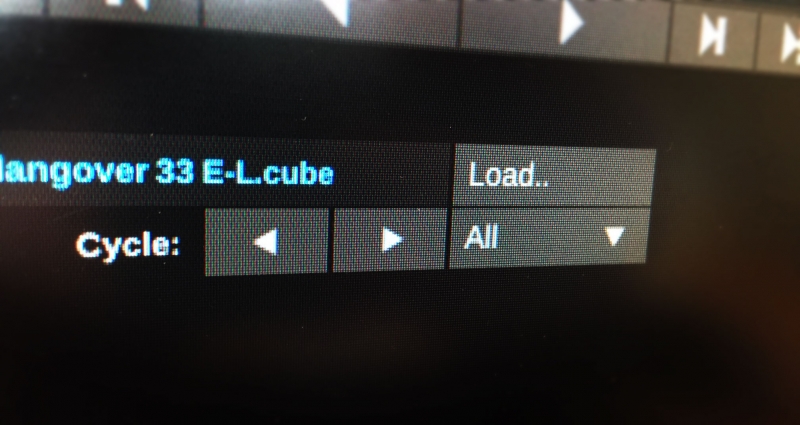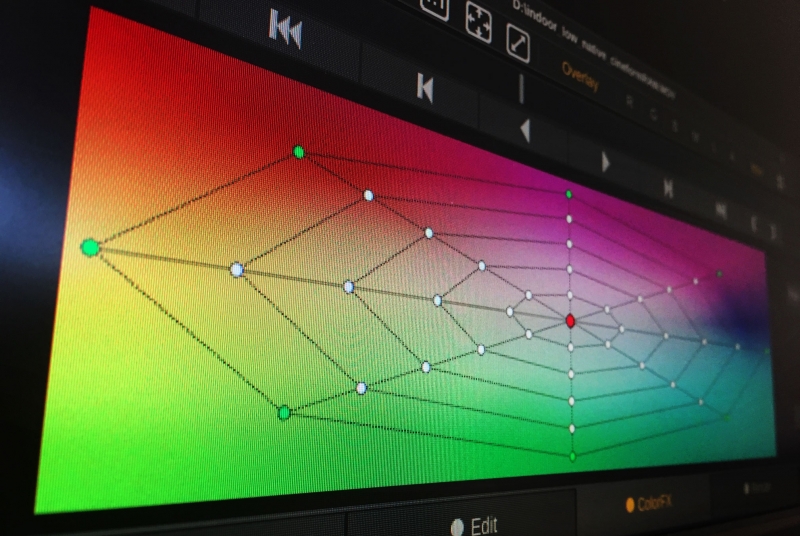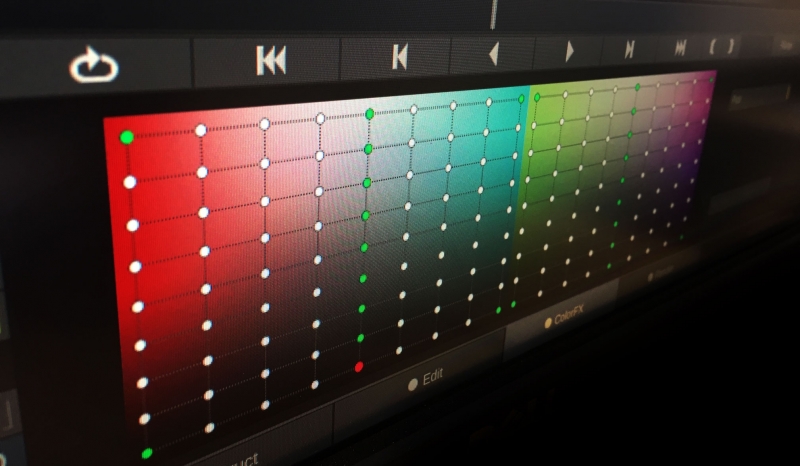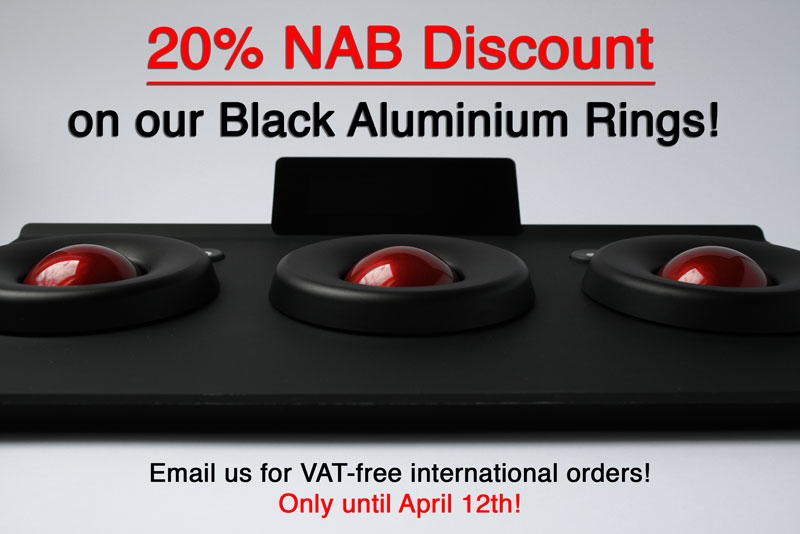-
Posts
257 -
Joined
-
Last visited
Content Type
Profiles
Case studies - Free
Case studies - Premium
Resources
Insider
Courses
Forums
Store
Everything posted by Mazze
-
Hi everyone, this time we have a 2-part tutorial about the burn-in in SCRATCH. What you'll learn: - setup your output tree with a burn-in node - add clip metadata - add watermarks - add frameguide and letterbox overlays - save and load user-defined burn-in presets - use the burn-in as a virtual overlay on your preview screen Enjoy! Mazze
-
- assimilate
- scratch
- (and 4 more)
-
Hi everyone, new tutorial on how create Avid MXF in SCRATCH and importing them into Media Composer. The interesting part is the source clip metadata being forwarded into the Avid MXF, so you actually don't need any ALE or so to transport metadata anymore. By that we're talking not only Scene and Take info, but any kind of source clip metadata, along with Sound TC, SoundRoll, Circle Take and QC comments from SCRATCH. It's pretty awesome - have a look: Cheers, Mazze
- 1 reply
-
- 1
-

-
- mxf
- assimilate
-
(and 5 more)
Tagged with:
-
Hi everyone, we have an almost new, mint condition ACS available for sale. Included are power supplies and keyboard stand. This is one of the last ACS panels ever built – it features extra security circuits, that prevent it from being damaged, as well as optical trackerballs. Although the rings of the grading panel are not seen on the images, they are definitely included. This ACS is as good as it gets, folks – please contact me via PM or email (info(at)angry-face.com) for pricing. We have one other ACS panel in stock, which is not mint, but still in good condition. https://www.angry-face.com/mint-condition-acs-panel-in-stock/ Best, Mazze
-
- controls surface
- panels
-
(and 3 more)
Tagged with:
-
Hi all, in this tutorial we're looking at managing and copying grades in SCRATCH, using the Trays, Memories and Snapshots. Enjoy!
- 4 replies
-
- 1
-

-
- assimilate
- scratch
-
(and 2 more)
Tagged with:
-
Hi everyone, Angry Face (that'd be me) can now offer black metallic trackerballs for all Tangent panels. They are especially nice on the Element panels with the aluminium rings, but they also work just as well with the Wave, Wave2 or Ripple panel from Tangent. The new trackerballs are also slightly heavier than the older red balls, having increased the weight from 60 to 90 grams. You can find the black metallic trackerballs in our shop at a price of 60€ per set of 4, or as part of a bundle, comprising one set of 4 aluminium rings and one set of 4 black metallic trackerballs. More here: https://www.angry-face.com/black-metallic-trackerballs/ and Images below 🙂 . Cheers, Mazze
-
Doesn't the latest DecklinkVideo Driver work?
-
Hi everyone! It’s IBC time again and from today until the end of the show, we’re giving 20% off for our aluminium rings! You can order the rings online right here in the shop – we ship worldwide and even free of VAT! If you want to save shipping cost by picking up the rings in person at IBC in Amsterdam, send me an email/PM and we’ll make it happen 🙂 .
-
You can manually tag Quicktime files using the BBC script from Filmlight's video. Also there is a (GUI-driven) app that lets you modify atoms - it's called Apple Atom Inspector. For this you need to make a developer account at apple.com in order to get access to it, though. It's really a mess, that is (sadly) not completely fixed at writing the files... any player, browser, etc. has to read the colr atoms out correctly again (as some ignore them, or read them incorrectly, etc. etc.). Keep that in mind when starting to mess with colr atoms 🙂 .
-
... by a decade or so . The debayering is done on the GPU - what's on CPU usually is the decoding. This however is changing. RED released their new SDK around NAB which supports decompression on the GPU as well. With that, both, decompressing and debayering is done via CUDA on GPU. All the CPU has to do, is get the data from disk to GPU. All this however is (obviously) Nvidia only at this point - and also Windows only. And so far, the only two apps that have implemented this new SDK are Assimilate SCRATCH and SGO Mistika, afaik. For this setup, two GPUs are recommended (at least for SCRATCH and Redcine-X) - one for RED-decoding/debayering, and one for everything else. But one GPU (as long as it's a recent RTX Geforce or Quadro) works fine as well - I would not go for the older Pascal generation cards, like a 1080Ti... old tech by now 😉 . With the new SDK I'm getting 36 fps playback speed on a 6-core i7 with a single RTX2080 (non-Ti) with 8K RED RAW in full res debayer. CPU load is at about 40% during playback. Cheers, Mazze
-
Make sure you configured it correctly as to what its input metrics are. Worst case, write to support - they are usually very responsive.
-
You could check out Drastic 4KScope - I think they have HDR-modes as well and support BMD/AJA/Bluefish444 hardware. With a Kona5 and decent GPU they can also do 8K.
-
... and here is a new features overview video 🙂 : Greetz, Mazze
- 1 reply
-
- 2
-

-

-
- assimilate
- scratch
-
(and 1 more)
Tagged with:
-
Hi all, Assimilate today released SCRATCH 9.1 (incl. Play Pro 9.1). This update contains a whole heap of really great additions for both, finishing and dailies workflows. Here are the most important ones in a nutshell: - new Color Remap Tool - new Color Management - greatly improved transcoding and playback performance - improved Apple ProRes RAW decoding - OpenColorIO support - Support for Multi-Layer EXR - Same-as-Source Render - Avid MXF now include any and every source shot metadata, incl. proper Sound TC - Frame-based Metadata support for ARRI Raw - Animation Channel filters (high pass, low pass, smoothen, reduce, level, noise) Else, if you’re a fan of release notes, knock yourself out below 😉 . Downloads and trials have also been updated: www.assimilateinc.com Cheers, Mazze SCRATCH V9.1 - Release Notes General SCRATCH v9.1 requires an re-activation of your license. If you have a valid v9.0 license, your license is automatically updated to include the new 9.1 version. After installing v9.1 you re-activate your existing license key. Contact licensing@assimilateinc.com if you have any question on licensing for version 9.1. Also note that this version is not backward compatible. You should not downgrade from this version and open a project in a lower version after it has been opened in v9.1. Do create a backup of your projects before upgrading and we advice not to upgrade in the middle of a project. Media Formats Increased render speeds through more efficient readback of the image from the GPU. The performance-gains depend on the specific setup / current bottleneck. RGB to YUV conversion is now done on the GPU to further improve performance for output to e.g. ProRes, DNx and H264/5. Support for multi-channel EXR where you can create a custom mapping to the RGBA channels in SCRATCH. Added an extended control-set for ProRes RAW where you are able to select any of the available color spaces and transfer functions in SCRATCH with the debayer. Added support for dynamic (per-frame) metadata. Currently only for ARRI Raw (e.g. camera roll and tilt, lens focus distance metadata items and more). As it is not fully clear yet what the impact on performance is, this feature needs to be enabled explicitly through the Advanced System Settings. Dynamic metadata shows up in the metadata stack and is included in EXR render. Note that in previous versions you needed to explicitly enable the option to write extended metadata in EXR. In this version it is enabled by default, but can be switched off using the relevant Advanced System Setting. Support for writing Cineform movie and dpx-c formats. Support for reading Uncompressed 4:2:2 media with the regular QuickTime reader. We added a Single Track/Multi Track audio option for QuickTime/mp4 (ProRes/H264|5) output. The Multi Track option puts each audio channels in a separate tracks in the QuickTime. Also, you can now also set a specific audio channel layout in the ProRes encoder for the QuickTime output; mono, stereo, 5.1, etc. The ProRes and Cineform writers now also include bit-depth and sample-rate selection controls. Including the latest version of various camera- and device-vendor specific SDKs.ARRI to version 6.1.1.0. with support for new upcoming camera models. Apple ProRes RAW SDK to version 20190607_12551 with fix for Intel UHD Graphics 630 and better overall performance. Oculus SDK to version 1.37.0. with support for the latest/ upcoming Oculus models. The Legacy (32bit) QuickTime reader is now disabled by default. This way we prevent the "non-optimized" warning from OSX when starting SCRATCH the first time when it instantiated a 32bit element. However, you can still enable the reader from the Advanced System Setting. Workflows We added a "New Timeline" option in the File Browser when loading media. After selecting the folder to load, this option opens a dialog where the user can set how to load the media (new timeline, timeline per subfolder, etc), apply specific framing and LUTs and do an automatic audio sync with any audio anywhere in the selected folder. This will speed up the loading and managing of media substantially. We added a Same-as-Source render option in the Render tab. There you can select any node from the output tree and select it to render each source clip with its original resolution, frame rate and aspect. This works for almost any output format except for e.g. DNxHD, which in itself has a resolution restriction. SCRATCH has a new / enhanced color-space management where the gamut and transfer function are separate entries. SCRATCH now includes a series of camera specific gamuts and gamma spaces like Log-C, V-Log, Alexa Wide Gamut, etc. as native. Besides letting SCRATCH handle all the necessary color-space conversions automatically, you can also use the new Color space plug-in that you can apply on any level in your composite or output tree to do the necessary transforms. On top of this there is also a new OpenColorIO plug-in to do any needed transform. This plug-in automatically hooks into your OCIO settings from other applications you might have or you can set it to a specific configuration file from the Advanced System settings. Using this plug-in ensures that certain conversions are exactly the same as done in other software that uses OCIO (note though that most to all of the transforms in SCRATCH color management are based on standard transfer-curves and gamut-chromatices). MXF DNx output now includes the audio timecode (slip) in the metadata, which is properly interpreted by Avid Media Composer. The DNx writer now also adds a TapeID column with the audio file name if the source clip has audio synced/linked to it. This way you do no longer need to supply separate ALE files with your output to editorial to transfer this information. SCRATCH now supports AVID Locators: either load them from an EDL or as a separate file (through the Import Conform in the Construct tab). To preserve any Locators when using a Placeholder conform, all notes / locators are preserved in the locator nodes. Various metadata updates. Audio timecode was added as standard element in the Metadata stack in the Construct, Edit and ColorFX tabs. We also added a standard Circle Take item which can also be set in the Scene/Take updater panel and is available as #circled hash code for file-masks and burn-in. Circle-take info is also read from audio metadata that is used in a sync as well as any comments from the audio file. The Scene/Take updater dialog has two new buttons: Circle take and increment scene number or letter. A new Advanced System setting automatically sets a clip’s reel-id to the clip-name when loading media. This speeds up your dailies Avid workflow. Conforming updates. An AAF/XML conform can now also use the direct file-reference in the AAF or XML file (rather than matching from an existing timeline or external folder). The EDL conform now auto detects and creates video tracks from multi-track EDLs. It also offers an option to update the names of the matched source shots to the EDL reel/name or marker-text. For the EDL export we fixed an issue were dissolves that started in the A-shot were not properly written to an exported EDL. We added an '[Original]' entry with the timeline sort options to easily revert to the original order after sorting on e.g. name or scene/take. The original sort order is maintained over sessions and is in fact the order of the slots – including slot length and transitions. We extended the quick keys for slipping video in the Editor and also apply them to audio slipping when in the Audio section of the Editor. The '<' and '>' keys slip the video/audio 5 and 1 frame respectively. The ',' and '.' keys slip the audio/video with 1 and 0.2 frames respectively. This update contains new version of the SCRATCH-to-Nuke and SCRATCH-to-AfterEffects bridges, which allow for a smoother roundtrip to and back from that software.Support for multi-clip selections, include clips from SCRATCH staging, option to either load back into the SCRATCH Tray or as version in the timeline, SCRATCH remembers opening a shot in Nuke/AE and will open the same project again when selecting the same shot again. To setup the bridges either use the first time SCRATCH Enhancement procedure or go to the Custom Commands in the Systems Settings panel and manually create a custom command. If you already have the bridges active from a previous version then use the Reset button in the Custom Command menu to auto-update the round-trip scripts. 4 new standard output-templates were added for PIX/DAX/MediaSilo/Copra rendering. Creative Tools A new Hue-Saturation and Hue-Luminance Grid tool replaces the more traditional 6-Vectors in the ColorFX grading toolset. The Hue-Sat grid can be operated in different modes: Linear vs Log/Log2 and displayed as a (color) circle or rectangular grid. Note that the 6-Vectors are still applied if you come from an existing project. You can also still display the 6-Vectors controls rather than the new Grid control if you prefer, by adjusting the relevant setting in the User Preference panel in ColorFX. An update on the Curves: you can now directly add and remove curve handles from the Curves menu and have an indicator to see what section of the curve is represented by the image that you are hovering over with the cursor. In the LUT menu in the ColorFX tab, we added a LUT Cycler option to easily cycle/browse through other LUTs in the same folder as the selected (grading) LUT. The motion estimation mode in the Re-timer was updated to increase both the speed and quality. Animation Editor updates. The Editor now supports a series of filters to tweak your animation: LowPass, HighPass, Smooth, Reduce (the number of keyframes) and Noise (to generate random values). To manage all animation channels more easily, the editor now has filter options only show active channels or only the channels of the selected layer. Furthermore, you can now directly enter values in the editor by shift-clicking a keyframe. When selecting layer-vertices in the View Port, SCRATCH will now automatically select the corresponding channel in the editor and vice-verse. Note that SCRATCH will now by default only show the x and y of any vertex in the Editor. If you want to see also the in/out handle of each vertex then you need to enable to relevant Advanced System setting. We added various keyboard shortcuts for managing animation keyframes while in the ColorFX or Edit tabs: Ctrl + click parameter. If Animation Off: reset value to default. If Animation Manual/Auto: create keyframe with default value or if parked on existing keyframe, change to default. Ctrl + Shift + click parameter. Create keyframe with current value Holding Ctrl + changing parameter also creates a keyframe directly. If Animation Off: Set Animation to "Manual" and create keyframe. If Animation set to Manual/Auto: Keep it Manual/Auto and create keyframe. Alt + click parameter = delete animation (all keyframes), but keep current value Alt + Ctrl + click parameter = delete all animation keyframes and reset to default value Shift + Alt + click parameter = delete keyframe under the cursor for this parameter We added new effects plug-ins with the standard installation of SCRATCH: Denoizer, Grain, Diffusion and HighlightBloom. All of these effects are aimed to be simple and fast and usable in an environment where you need a quick grade. They are not aimed to replace more advanced third party tools you might use in a finishing context. We added the *.vlt extension for loading (Panasonic) 3D LUTs. Increased the accuracy of ACES CTL transformation processing without affecting the performance. Also, the generic XYZ-ACES transform used by the color management was updated to get similar results as applying an IDT transforms of camera specific formats. The Clarity parameter in the Numeric menu is now animatable. Misc New first-time-start setup screen to automatically setup matchbox shader plug-ins and after effects / nuke bridges. The Flip/Flop Orientation controls have been moved to the Media menu. The Flip/Flop controls in the Editor are now applied to the Source-orientation and no longer update the framing to make things more consistent. Also, any flip/flops in a conform are now also applied to the Source Orientation instead of the framing. Relabeling of the "Setup" menu to (more explicit) "Framing" in both the ColorFX and Edit tabs. The shot pipeline settings have been moved to the Config-menu in the ColorFX tab. File-size is now interpreted and displayed in the correct units (Mb/Gb) in both the metadata stack and in the various reports that you can generate (which also include the total size of all selected clips). Furthermore, the standard reports have been updated to auto calculate file-size or render proxies when required. Updated AJA SDK to version 15.1.0.2. incl. support for io 4K Plus, Kona 5 and support for 4K-2SI (2 Sample Interleave) for AJA SDI output. Updated BMD DeckLink SDK to version 11.1. which adds more frame rates and 8K display modes. Allow to start dragging clips directly from the search dialog. Added #sfolder hash code to get specific sub-folder of a source clip. Updated the #spath hash code; without parameters it displays the full path, #spath[0] returns the relative path from the project media folder and #spath[1…n] returns the n subfolders of the source clip. Allow adding custom data to the sync-player broadcast message. Set #code template in the 'Sync Player extended data' sconfig. Quick keys updates and tweaks: the J,K,L keys did not work correctly when in the Canvas menu. Also the 'i' quick key is no longer used for the Canvas and now always sets the in-point for a range. We added an option to directly install the Matchbox (shader) plug-ins collection from the System Settings menu. Added function in the Media Browser - Grade tab to remove all empty layers from the selected shots to easily cleanup your grades. An empty layer is defines as only having a canvas - no grading or fill/matte definition. We added a search option for the (ever growing) Advanced System Settings list. The "A-Relative" option in the paste-mask used with the Copy-Grade function is now enabled by default. This helps in a scenario where the source material was trimmed (using e.g. same-as-source render) and the in-points changed. Option to add additional command line parameters with a custom command which makes it easier to re-use a script with different settings. When xml script is pending to be processed with a project, the Refresh button now only processes the xml and not do the full project refresh. This way any roundtrip using the custom commands is much faster and direct. To make it possible to do a fully automated scratch installation and activation, we added the option to pass '-lic xxxx-xxxx-xxxxxxxx' as command line parameter. SCRATCH will start, activate the license and automatically close again. Fixes It was not possible to use Unicode characters in the filename specification for the BWF audio export. The ARRI Camera ID and Camera Index metadata showed incorrect values. CDL values and comments from an EDL were not passed on to placeholder nodes. Using decoder scaling with RED / Sony, could render different results when using a linear vs a high order filter. Memory management update where systems with a relative small amount of internal memory could become unresponsive when working with (8k) images. Also SCRATCH is using a different version of the CUDA runtime on OSX to enable the new RED GPU decoding on older versions of OSX. Play Pro Specific The render-dialog in Play Pro now also has an explicit same-as-source option to render all selected clips to their native resolution, framerate and aspect. The Render can also include a standard burn-in overlay with source shot metadata. You can now link and slip external audio to a clip in the Player tab.
- 1 reply
-
- assimilate
- scratch
-
(and 1 more)
Tagged with:
-
No group grading, I'm afraid. However, we implemented a Timeline sort option, which allows to sort the timeline on name, reel-id or timecode and back to the record order, which should help with some of the scenarios. We have unfortunately not had any more requests for groups, hence this feature request did not make it to the top of the list yet.
-
Wow - I just realized, that's a lot to read. Plenty of cool stuff in 9.1 - worth the read 😉 .
-
Hey everyone, we just put the beta of SCRATCH 9.1 live. It has a lot of great new features and significant performance improvements. Amongst them are a new color tool (which will be very familiar to many here), support for frame based metadata, support for EXR layers and channels, support for OCIO, same-as-source render option and a whole lot more 🙂 . Full release notes as follows and some screenshots below! RELEASE NOTES Media Formats Increased render speeds through more efficient readback of the image from the GPU. The performance-gains depend on the specific setup / current bottleneck. RGB to YUV conversion is now done on the GPU to further improve performance for output to e.g. ProRes, DNx and H264/5. Support for multi-channel EXR where you can create a custom mapping to the RGBA channels in SCRATCH. Added an extended control-set for ProRes RAW where you are able to select any of the available color spaces and transfer functions in SCRATCH with the debayer. Added support for dynamic (per-frame) metadata. Currently only for ARRI Raw (e.g. camera roll and tilt, lens focus distance metadata items and more). As it is not fully clear yet what the impact on performance is, this feature needs to be enabled explicitly through the Advanced System Settings. Dynamic metadata shows up in the metadata stack and is included in EXR render. Note that in previous versions you needed to explicitly enable the option to write extended metadata in EXR. In this version it is enabled by default, but can be switched off using the relevant Advanced System Setting. Support for writing Cineform movie and dpx-c formats. Support for reading Uncompressed 4:2:2 media with the regular QuickTime reader. Workflows We added a "New Timeline" option in the File Browser when loading media. After selecting the folder to load, this option opens a dialog where the user can set how to load the media (new timeline, timeline per subfolder, etc), apply specific framing and LUTs and do an automatic audio sync with any audio anywhere in the selected folder. This will speed up the loading and managing of media substantially. We added a Same-as-Source render option in the Render tab. There you can select any node from the output tree and select it to render each source clip with its original resolution, frame rate and aspect. This works for almost any output format except for e.g. DNxHD, which in itself has a resolution restriction. SCRATCH has a new / enhanced color-space management where the gamut and transfer function are separate entries. SCRATCH now includes a series of camera specific gamuts and gamma spaces like Log-C, V-Log, Alexa Wide Gamut, etc. as native. Besides letting SCRATCH handle all the necessary color-space conversions automatically, you can also use the new Color space plug-in that you can apply on any level in your composite or output tree to do the necessary transforms. On top of this there is also a new OpenColorIO plug-in to do any needed transform. This plug-in automatically hooks into your OCIO settings from other applications you might have or you can set it to a specific configuration file from the Advanced System settings. Using this plug-in ensured that certain conversions are exactly the same as done in other software that uses OCIO (note though that most to all of the transforms in SCRATCH color management are based on standard transfer-curves and gamut-chromatices). MXF DNx output now includes the audio timecode (slip) in the metadata, which is properly interpreted by Avid Media Composer. The DNx writer now also adds a TapeID column with the audio file name if the source clip has audio synced/linked to it. This way you do no longer need to supply separate ALE files with your output to editorial to transfer this information. SCRATCH now supports AVID Locators: either load them from an EDL or as a separate file (through the Import Conform in the Construct tab). To preserve any Locators when using a Placeholder conform, all notes / locators are preserved in the locator nodes. Various metadata updates. Audio timecode was added as standard element in the Metadata stack in the Construct, Edit and ColorFX tabs. We also added a standard Circle Take item which can also be set in the Scene/Take updater panel and is available as #circled hash code for file-masks and burn-in. Circle-take info is also read from audio metadata that is used in a sync as well as any comments from the audio file. The Scene/Take updater dialog has two new buttons: Circle take and increment scene number or letter. A new Advanced System setting automatically sets a clip’s reel-id to the clip-name when loading media. This speeds up your dailies Avid workflow. Conforming updates. An AAF/XML conform can now also use the direct file-reference in the AAF or XML file (rather than matching from an existing timeline or external folder). The EDL conform now auto detects and creates video tracks from multi-track EDLs. For the EDL export we fixed an issue were dissolves that started in the A-shot were not properly written to an exported EDL. We added an '[Original]' entry with the timeline sort options to easily revert to the original order after sorting on e.g. name or scene/take. The original sort order is maintained over sessions and is in fact the order of the slots – including slot length and transitions. We extended the quick keys for slipping video in the Editor and also apply them to audio slipping when in the Audio section of the Editor. The '<' and '>' keys slip the video/audio 5 and 1 frame respectively. The ',' and '.' keys slip the audio/video with 1 and 0.2 frames respectively. This update contains new version of the SCRATCH-to-Nuke and SCRATCH-to-AfterEffects bridges, which allow for a smoother roundtrip to and back from that software.Support for multi-clip selections, include clips from SCRATCH staging, option to either load back into the SCRATCH Tray or as version in the timeline, SCRATCH remembers opening a shot in Nuke/AE and will open the same project again when selecting the same shot again. Creative Tools A new Hue-Saturation and Hue-Luminance Grid tool replaces the more traditional 6-Vectors in the ColorFX grading toolset. The Hue-Sat grid can be operated in different modes: Linear vs Log/Log2 and displayed as a (color) circle or rectangular grid. Note that the 6-Vectors are still applied if you come from an existing project. You can also still display the 6-Vectors controls rather than the new Grid control if you prefer, by adjusting the relevant setting in the User Preference panel in ColorFX. An update on the Curves: you can now directly add and remove curve handles from the Curves menu and have an indicator to see what section of the curve is represented by the image that you are hovering over with the cursor. In the LUT menu in the ColorFX tab, we added a LUT Cycler option to easily cycle/browse through other LUTs in the same folder as the selected (grading) LUT. The motion estimation mode in the Re-timer was updated to increase both the speed and quality. Animation Editor updates. The Editor now supports a series of filters to tweak your animation: LowPass, HighPass, Smooth, Reduce (the number of keyframes) and Noise (to generate random values). To manage all animation channels more easily, the editor now has filter options only show active channels or only the channels of the selected layer. Furthermore, you can now directly enter values in the editor by shift-clicking a keyframe. When selecting layer-vertices in the View Port, SCRATCH will now automatically select the corresponding channel in the editor and vice-verse. Note that SCRATCH will now by default only show the x and y of any vertex in the Editor. If you want to see also the in/out handle of each vertex then you need to enable to relevant Advanced System setting. We added various keyboard shortcuts for managing animation keyframes while in the ColorFX or Edit tabs: Ctrl + click parameter. If Animation Off: reset value to default. If Animation Manual/Auto: create keyframe with default value or if parked on existing keyframe, change to default. Ctrl + Shift + click parameter. Create keyframe with current value Holding Ctrl + changing parameter also creates a keyframe directly. If Animation Off: Set Animation to "Manual" and create keyframe. If Animation set to Manual/Auto: Keep it Manual/Auto and create keyframe. Alt + click parameter = delete animation (all keyframes), but keep current value Alt + Ctrl + click parameter = delete all animation keyframes and reset to default value Shift + Alt + click parameter = delete keyframe under the cursor for this parameter We added new effects plug-ins with the standard installation of SCRATCH: Denoizer, Grain and HighlightBloom. All of these effects are aimed to be simple and fast and usable in an environment where you need a quick grade. They are not aimed to replace more advanced third party tools you might use in a finishing context. We added the *.vlt extension for loading (Panasonic) 3D LUTs. Misc The Flip/Flop Orientation controls have been moved to the Media menu. The Flip/Flop controls in the Editor are now applied to the Source-orientation and no longer update the framing to make things more consistent. Also, any flip/flops in a conform are now also applied to the Source Orientation instead of the framing. Relabeling of the "Setup" menu to (more explicit) "Framing" in both the ColorFX and Edit tabs. The shot pipeline settings have been moved to the Config-menu in the ColorFX tab. File-size is now interpreted and displayed in the correct units (Mb/Gb) in both the metadata stack and in the various reports that you can generate (which also include the total size of all selected clips). Updated AJA SDK to version 15.1.0.2. incl. support for io 4K Plus, Kona 5 and support for 4K-2SI (2 Sample Interleave) for AJA SDI output. Updated BMD DeckLink SDK to version 11.1. which adds more frame rates and 8K display modes. Allow to start dragging clips directly from the search dialog. Added #sfolder hash code to get specific sub-folder of a source clip. Updated the #spath hash code; without parameters it displays the full path, #spath[0] returns the relative path from the project media folder and #spath[1…n] returns the n subfolders of the source clip. Allow adding custom data to the sync-player broadcast message. Set #code template in the 'Sync Player extended data' sconfig. Quick keys updates and tweaks: the J,K,L keys did not work correctly when in the Canvas menu. Also the 'i' quick key is no longer used for the Canvas and now always sets the in-point for a range. We added an option to directly install the Matchbox (shader) plug-ins collection from the System Settings menu. Added function in the Media Browser - Grade tab to remove all empty layers from the selected shots to easily cleanup your grades. An empty layer is defines as only having a canvas - no grading or fill/matte definition. Play Pro Specific The render-dialog in Play Pro now also has an explicit same-as-source option to render all selected clips to their native resolution, framerate and aspect. The Render can also include a standard burn-in overlay with source shot metadata. You can now link and slip external audio to a clip in the Player tab. If anyone wants to put it through its paces, just register for a normal trial and get the beta installer from here: http://www.assimilatesupport.com/akb/Download51022.aspx Cheers, Mazze
-
SCRATCH does not require you to select an "input color space" as such - you would be working directly on whatever the RED SDK gives you. If that is Rec709, or REDWideGamutRGB, Rec2020, etc. is totally up to you 🙂 . You can set this per clip, or for the whole timeline, or all clips in your project. So if all clips are set to REDWideGamutRGB, this is what you're then working on (your "input" format if you want). From thereon out, there is an output color space on the main output node, that "unifies" everything - to e.g. Rec709 2.4 gamma. This obviously is applied after any grade - same as for any display transform, which you can set for UI and preview screen separately. Greetz, Mazze
-
What Jeff said. The Micro is well manufactured, but has mainly two disadvantages imho: It only works with Resolve and it is quite heavy, which can be a disadvantage if you have to carry it around (i.e. on-set). The Wave2 is lighter, due to its plastic chassis and works with almost any application, incl. Resolve. The downsides of the Wave2 are basically, that it's plastic (very robust plastic, though) and that it has master dials, instead of rings. That is more a question of taste, I guess - but at the same time, it's also a reason why the Wave2 is more affordable. Cheers, Mazze
- 5 replies
-
- blackmagic micro panel
- tangent wave 2
- (and 2 more)
-
Hi Andres, the upcoming SCRATCH 9.1 will ship with quite a big update on its color management, allowing you to work natively in various camera color spaces (such as REDWideGamutRGB and Log3G10). So when loading RED footage into SCRATCH, you'd debayer it to those REDWideGamutRGB and Log3G10 using IPP2 and then work your way off from there. You can do so by either setting the display transform to Rec709 (or anything else) and basically work before the transform to Rec709, or just work on the log image as-is and grade from there. As for roundtripping from other applications: SCRATCH allows you to dynamically set the reel-id of any (or all) shots to different formats: I.e. just "A004", or "A004C012" (to stay within the 8-character limit of EDLs), or even the full clipname: "A004_C012_XDFIGFN". Depending on how the editing app interpreted the reel-id and put it into the XML/AAF/EDL you are conforming in SCRATCH, you are able to accommodate for this. Let me know if you need anything else. Cheers, Mazze
-
Hey everyone! As the title states - 20% off black aluminium rings until end of NAB 🙂 . I'll be in LA the week before NAB and obviously also at the show, carrying a bunch of sets around with me, if anyone is interested in trying them out before buying. And obviously, if you wanna save some shipping cost, let me know and I can just deliver them in person 😉 . http://www.angry-face.com/product/black-metal-rings-for-the-tangent-element-panel-set-of-4/ Cheers, Mazze
-
- 1
-

-
- angry face
- black aluminium rings
-
(and 2 more)
Tagged with:
-
There is one more episode in the making - stay tuned 🙂 .
-
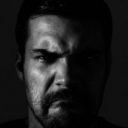
Introduction to Visual Effects in SCRATCH
Mazze commented on Lowepost's insider article in Color Grading
There is one more episode in the making - stay tuned 🙂 . -
Hey Tom - it depends on how you define high-end . A lot of studios use it for review sessions and screenings, vfx houses use it as vfx reference player and asset management system in combination with FTrack, Shotgun and NIM. As a finishing system it's mostly used by smaller boutiques (which doesn't mean it's not high end, though 😉 ) and some bigger companies, which use a so-called site-license (annual all-you-can-eat). And then obviously we have a pretty big DIT community that use it for dailies. Lastly, when it comes to high end live streaming (more specifically high end VR live streaming), I think there's nothing else out there that lets you stitch incoming camera streams, do the geometry conversion, grade, comp, add OFX-plugins, Matchbox shaders and output through SDI, DisplayPort, LiveStream (to Facebook/Youtube/Custom server) and Headset at once and it realtime on a single GPU. 🙂
-

Introduction to Visual Effects in SCRATCH
Mazze commented on Lowepost's insider article in Color Grading
Hey Tom - it depends on how you define high-end . A lot of studios use it for review sessions and screenings, vfx houses use it as vfx reference player and asset management system in combination with FTrack, Shotgun and NIM. As a finishing system it's mostly used by smaller boutiques (which doesn't mean it's not high end, though 😉 ) and some bigger companies, which use a so-called site-license (annual all-you-can-eat). And then obviously we have a pretty big DIT community that use it for dailies. Lastly, when it comes to high end live streaming (more specifically high end VR live streaming), I think there's nothing else out there that lets you stitch incoming camera streams, do the geometry conversion, grade, comp, add OFX-plugins, Matchbox shaders and output through SDI, DisplayPort, LiveStream (to Facebook/Youtube/Custom server) and Headset at once and it realtime on a single GPU. 🙂 -
Kevin really does a great job on these videos - he's an amazing instructor!


